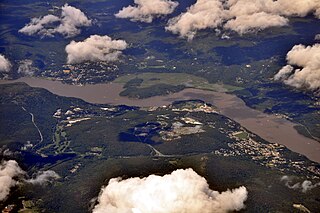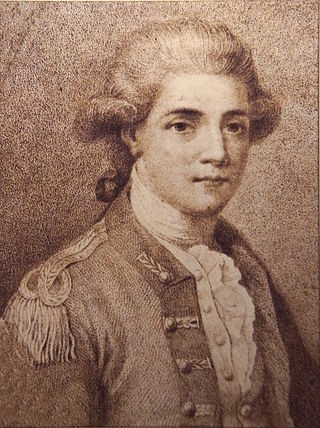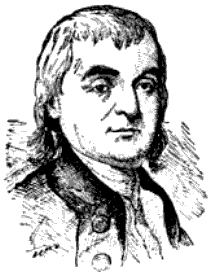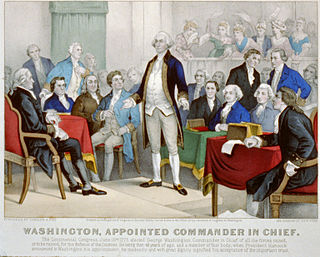
West Point is the oldest continuously occupied military post in the United States. Located on the Hudson River in New York, General George Washington stationed his headquarters in West Point in the summer and fall of 1779 during the American Revolutionary War, and later called it "the most important Post in America" in 1781 following the war's end. West Point also was the site of General Benedict Arnold's failed attempt at treason during the Revolutionary War.

West Haverstraw is a village incorporated in 1883 in the town of Haverstraw, Rockland County, New York, United States. It is located northwest of Haverstraw village, east of Thiells, south of the hamlet of Stony Point, and west of the Hudson River. The population was 10,165 at the 2010 census. The majority of the hamlet of Garnerville is contained in the village of West Haverstraw.

Major John André was a British Army officer who served as the head of Britain's intelligence operations during the American War for Independence. In September 1780, he negotiated with Continental Army officer and turncoat Benedict Arnold, who secretly offered to turn over control of the American fort at West Point, New York to the British. Due to a series of mishaps and unforeseen events, André was forced to return to British lines from a meeting with Arnold through American-controlled territory while wearing civilian clothes.

Benedict Arnold was an American-born British military officer who served during the American Revolutionary War. He fought with distinction for the American Continental Army and rose to the rank of major general before defecting to the British in 1780. General George Washington had given him his fullest trust and had placed him in command of West Point in New York. Arnold was planning to surrender the fort to British forces, but the plot was discovered in September 1780, whereupon he fled to the British lines. In the later part of the war, Arnold was commissioned as a brigadier general in the British Army and placed in command of the American Legion. He led British forces in battle against the army which he had once commanded, and his name became synonymous with treason and betrayal in the United States.

Robert Howe was a Continental Army general from the Province of North Carolina during the American Revolutionary War. The descendant of a prominent family in North Carolina, Howe was one of five generals, and the only major general, in the Continental Army from that state. He also played a role in the colonial and state governments of North Carolina, serving in the legislative bodies of both.

Margaret Shippen was the second wife of General Benedict Arnold. She has been described as "the highest-paid spy in the American Revolution".

John Paulding was an American militiaman from the state of New York during the American Revolution. In 1780, he was one of three men who captured Major John André, a British spy associated with the treason of Continental general and commandant of West Point Benedict Arnold. Andre was convicted and hanged.

The Battle of Pell's Point, also known as the Battle of Pelham, was a skirmish fought between British and American troops during the New York and New Jersey campaign of the American Revolutionary War. The conflict took place in what is now part of Pelham Bay Park in the Bronx, New York City and the villages of Pelham Manor and Pelham in Westchester County, New York.
"To the Inhabitants of America" is an open letter written by former Continental Army Major General Benedict Arnold not long after his defection to the British side in the American Revolutionary War. The letter, dated October 7, 1780, was published in New York on October 11. In it, he explains his justification for his actions.

William Smith was a lawyer, historian, speaker, loyalist, and eventually the loyalist Chief Justice of the Province of New York from 1780 to 1782 and Chief Justice of the Province of Quebec from 1786, later Lower Canada, from 1791 until his death.

The 1st Canadian Regiment (1775–1781) was an Extra Continental regiment of the American Patriots' Continental Army, consisting primarily of volunteers from the Province of Quebec. The 1st was raised by James Livingston to support Patriot efforts in the American Revolutionary War during the invasion of Quebec. Livingston, who was born in New York and living in Quebec, recruited men from Chambly, Quebec as early as September 1775, but a formal regimental designation was made by Richard Montgomery on November 20, 1775, with recognition by the Second Continental Congress following on January 8, 1776. The regiment, which never approached its authorized size of 1,000 men, saw action primarily in the Canadian theater and New York, and was disbanded on January 1, 1781, at King's Ferry, New York.

The Reformed Church of Tappan in Tappan, Rockland County, New York is a historic church. It is a contributing property to the Tappan Historic District.

Beverley Robinson, was a Virginia-born soldier who became a wealthy colonist of the Province of New York and is best known as a Loyalist during the American Revolutionary War. Robinson married Susanna Philipse, heiress to a significant share of the roughly 250 square miles (650 km2) Highland Patent on the lower Hudson River in the Province of New York.

George Washington commanded the Continental Army in the American Revolutionary War (1775–1783). After serving as President of the United States, he briefly was in charge of a new army in 1798.

Sugarloaf Hill is a 785 ft (239 m) peak along the Hudson River in Putnam County, New York, part of the Hudson Highlands. It was named by the Dutch for its resemblance in outline to a sugarloaf when sailing up the river towards it.

John Jameson was an American soldier, most notable for his service during the American Revolutionary War. He is equally notable for his missteps in matters concerning the apprehension of the British spy, John André, that allowed the escape of Andre's partner in the conspiracy, General Benedict Arnold, to surrender and turn-over the fort at West Point to the British. He was a resident of Culpeper, Virginia.

The military career of Benedict Arnold in 1775 and 1776 covers many of the military actions that occurred in the northernmost Thirteen Colonies early in the American Revolutionary War. Arnold began the war as a captain in Connecticut's militia, a position to which he was elected in March 1775. Following the outbreak of hostilities at Lexington and Concord the following month, his company marched northeast to assist in the siege of Boston that followed. Arnold proposed to the Massachusetts Committee of Safety an action to seize Fort Ticonderoga in New York, which he knew was poorly defended. They issued a colonel's commission to him on May 3, 1775, and he immediately rode off to the west, where he arrived at Castleton in the disputed New Hampshire Grants in time to participate with Ethan Allen and his men in the capture of Fort Ticonderoga. He followed up that action with a bold raid on Fort Saint-Jean on the Richelieu River north of Lake Champlain. He then resigned his Massachusetts commission after a command dispute with the head of a detachment of Connecticut militia troops that arrived in June to reinforce Ticonderoga.

The military career of Benedict Arnold from 1777 to 1779 was marked by two important events in his career. In July 1777, Arnold was assigned to the Continental Army's Northern Department, where he played pivotal roles in bringing about the failure of British Brigadier Barry St. Leger's siege of Fort Stanwix and the American success in the battles of Saratoga, which fundamentally altered the course of the war.

The military career of Benedict Arnold in 1781 consisted of service in the British Army. Arnold had changed sides in September 1780, after his plot was exposed to surrender the key Continental Army outpost at West Point. He spent the rest of 1780 recruiting Loyalists for a new regiment called the American Legion. Arnold was then sent to Virginia with 1,600 men in late December by General Sir Henry Clinton, with instructions to raid Richmond and then establish a strong fortification at Portsmouth.
Benedict Arnold: A Question of Honor is a 2003 American television film directed by Mikael Salomon and starring Aidan Quinn, Kelsey Grammer, Flora Montgomery and John Light. It portrays the career of Benedict Arnold in the American Revolutionary War and his dramatic switch in 1780 from fighting for American Independence to being a Loyalist trying to preserve British rule in America. Arnold's relationships with his wife Peggy Shippen and the British officer John André are focused on. The friction between Arnold and General Horatio Gates, portrayed near the beginning of the film, was historically accurate. The movie points out that, before his treason, Arnold was considered a patriot and a hero. A letter from General Washington is read at the beginning where he enthusiastically recommends Arnold for promotion saying that there is no general in the army more deserving and even comparing him to Hannibal. The movie briefly documents Arnold's final years of exile in England in which he laments his treasonous acts, realizing that he is despised and that people compare him with Judas and Lucifer.
















